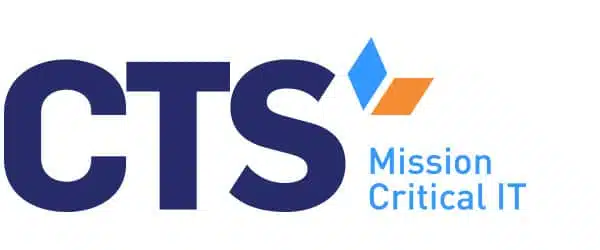School security is no longer just about locked doors and sign-in sheets. Educational institutions face serious threats ranging from unauthorized access to full-scale shootings. Administrators must rethink their approach to security, integrating physical security systems that protect students, staff, and assets without disrupting the learning environment.
The challenge isn’t just choosing the right physical security devices—it’s knowing where to start. With rapid physical security technology trends shaping the industry, schools need solutions that go beyond traditional surveillance.
Why Schools Need Smarter Physical Security Technology
The risks to school safety are real, and they’re evolving. Schools must prepare for security breaches that range from break-ins and vandalism to more sophisticated threats that blend cyber and physical security risks.
Identifying Potential Threats
A strong approach to security starts with understanding what schools are up against:
- Unauthorized Access & Intruders: Weak access control systems can allow unauthorized individuals onto school grounds, creating safety risks.
- Data Breaches & Cyber Threats – Schools store sensitive student and staff information. Without cyber-secure policies, this data can be compromised.
- Vandalism & Property Damage: Schools are frequent targets for vandalism, theft, and destruction of property, requiring improved physical security IT strategies.
- Emergencies & Lockdowns: Rapid response is critical. Outdated security operations slow down emergency reaction times.
- Growing Security Industry Trends: Cloud-based systems, AI-driven monitoring, and video analytics are reshaping how schools improve security.
The Consequences of Weak Security
Failure to address these risks can result in more than just property loss. Schools with poor security management face:
- Increased liability for incidents on campus.
- Financial strain from break-ins, damage, and lawsuits.
- Loss of trust from parents, students, and staff.
- Potential legal action for failing to meet safety standards.
Learn more: Ensuring School Resilience: How to Prepare for an Outage
Essential Physical Security Technologies for Schools
1. Access Control Systems
Access control systems regulate who enters and exits school buildings, reducing unauthorized access and potential security breaches.
Key features:
- Keycard, mobile, or biometric entry: Limit access to staff and authorized visitors.
- Cloud-based security management: Remotely monitor and adjust permissions.
- Visitor management systems: Digitally log and track guests for added oversight.
- Automated lockdown capabilities: Secure doors instantly in emergencies.
Many security incidents begin with an intruder gaining easy access. Without modern access control systems, doors can be left unlocked and visitor tracking is unreliable. Cloud-connected access solutions allow administrators to remotely lock down facilities and revoke access in real time.
2. Video Surveillance & Video Analytics
Cameras are no longer just passive recording tools. Modern video surveillance and video analytics software transforms physical security IT by identifying threats in real time through artificial intelligence (AI), from detecting unusual movements to flagging unauthorized individuals on school grounds.
Key features:
- AI-powered surveillance: Detects suspicious behavior before an incident occurs.
- Cloud-based security storage: Enables remote access to footage.
- Facial recognition & license plate tracking: Enhances visitor verification.
- Automated alerts: Sends real-time notifications to security teams.
Legacy camera systems require hours of manual footage review. AI-powered video analytics proactively scans for risks and improves security response times. This is especially critical for large campuses where security teams can’t monitor every corner at once.
3. Intrusion Detection & Alarm Systems
Modern physical security systems must go beyond passive surveillance. Intrusion detection systems (IDS) provide instant alerts when doors, windows, or restricted areas are breached.
Key features:
- Motion sensors & glass-break detectors: Identify forced entry attempts.
- Cloud-based systems: Send alerts to administrators remotely.
- Integration with access control: Lock down entry points upon a breach.
- Emergency response coordination: Connects with local law enforcement.
By combining physical security IT with IDS and alarms, threats can quickly be identified before they escalate. Automated alerts ensure that security teams and first responders are notified the moment a security breach occurs.
4. Emergency Communication & Mass Notification Systems
When emergencies happen, rapid communication is critical. Notification systems ensure that students, staff, and parents receive immediate updates during lockdowns, evacuations, or other incidents.
Key features:
- Panic buttons: Discreet, one-touch emergency alerts in classrooms.
- Mass notification via SMS, email, and PA systems: Ensures fast, widespread alerts.
- Two-way communication: Allows security teams to coordinate in real time.
- AI-driven threat detection: Automates emergency responses.
Delayed communication can lead to chaos during emergencies. By integrating cloud-based systems, key personnel can be instantly notified to lock down access points and provide clear instructions to staff and students.
5. Cyber & Physical Security Integrations
The latest security industry trends emphasize the need for AI-driven solutions that bridge cybersecurity and physical security to improve overall safety.
Key features:
- AI-driven cybersecurity: Monitors network vulnerabilities that could compromise security devices.
- Smart building security integration: Connects physical and digital security systems.
- Threat intelligence monitoring: Predicts risks based on security tech trends.
- Automated security updates: Keeps access control and video surveillance cyber-secure.
A breach in digital security can lead to physical vulnerabilities. If cybercriminals gain control of access control systems or surveillance cameras, they can disable alarms and gain unauthorized entry. Integrating cyber and physical security ensures that both IT and physical infrastructure remain secure.
Learn more: Top Cyberattacks on Schools in 2024 and How to Prevent Them
Where to Start: A Step-by-Step Approach
1. Conduct a Security Audit
Before making any purchases, schools need a full assessment of their security operations to pinpoint weaknesses. A security expert can evaluate existing physical security IT infrastructure and assess access vulnerabilities to determine areas for improvement.
- Audit entry points: Ensure all doors, windows, and access points are secured with access control systems.
- Review surveillance coverage: Identify blind spots in video analytics and monitoring solutions.
- Test alarm & intrusion systems: Check if existing physical security devices are functioning properly.
- Evaluate cybersecurity risks: Assess the risk of data breaches that could impact cyber and physical security.
2. Prioritize & Budget for Security Investments
Not every school has the resources to overhaul security overnight. A smart approach to security means prioritizing the most critical vulnerabilities first.
- Start with access control: Upgrade to cloud-based security solutions for better monitoring.
- Strengthen IDS: Invest in motion sensors and automated alerts.
- Upgrade communication systems: Emergency mass notifications enhance crisis response.
3. Partner with a Physical Security Provider
Work with a security expert who understands the significant challenges of educational environments and can deliver integrated cloud-based systems that connect physical security IT with cybersecurity solutions.
- Look for K-12 expertise: Work with a provider experienced in school security.
- Integrate cloud-based security: Remote access and monitoring improve efficiency.
- Emphasize compliance: Security solutions must align with privacy laws.
4. Implement in Phases for Minimal Disruption
Rolling out new physical security systems shouldn’t interrupt daily school operations. A phased approach ensures smooth adoption.
- Phase 1: Secure Entry Points – Install access control systems and lockdown solutions.
- Phase 2: Deploy Video Analytics – Upgrade camera systems and AI-powered threat detection.
- Phase 3: Strengthen Intrusion Detection – Enhance perimeter security with alarms and sensors.
- Phase 4: Integrate Cybersecurity – Ensure cyber and physical security systems are connected.
5. Train Staff & Conduct Regular Drills
Even the most advanced physical security systems are ineffective if staff and students don’t know how to use them. Security awareness training is just as important as the technology itself.
- Train staff: Ensure proper use of keycards and visitor management.
- Run active threat drills: Prepare for real security breaches with regular simulations.
- Establish a security response team: Assign key personnel to manage security operations.
Protect Your Students and Staff with the Right Solutions
With security industry trends shifting toward integrated cyber and physical security, it’s more important than ever to work with security experts who can provide end-to-end protection.
At CTS, we specialize in providing physical security technology solutions for schools. Our access control services, video management solutions, and Network Operations Center (NOC) will help you secure every possible vulnerability of your campus buildings.




